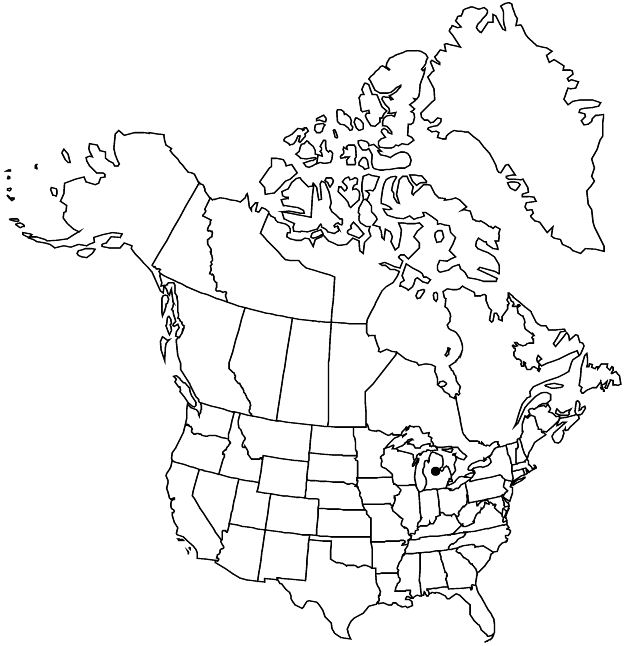Pyrus cordata
Observ. Pl. Angers, 152. 1818.
Plants 50–80 (–100) dm. Branches mostly purplish brown or dark reddish-brown, glabrous; thorns present at end of twigs. Leaves: petiole 2–5 cm, glabrous when young; blade ovate, ovatelanceolate, or suborbiculate, 2–5.5 × 1.5–3.5 cm, base usually cordate, sometimes broadly rounded, margins crenate-dentate or serrulate, eciliate or sparsely ciliate when young, apex acute or shortly acuminate, surfaces glabrous. Pedicels 2–3.5 cm, pubescent or glabrate. Flowers 20–25 mm diam.; sepals triangular-lanceolate, 2–3 (–5.5) × 1–1.5 mm, apex acuminate; petals white or creamy, ovate-elliptic or obovate, 6–12 × 5–7 mm; ovaries 5-locular; styles (3–) 5. Pomes red or reddish-brown or reddish green, densely pale dotted, usually globose, sometimes subglobose, 8–15 (–20) × 8–15 mm; sepals deciduous, sometimes persistent. 2n = 34.
Phenology: Flowering late Apr–early May; fruiting Aug–Sep.
Habitat: Moist soil at edge of wetlands
Elevation: 200–300 m
Distribution

Introduced; Mich., Europe, w Asia, n Africa
Discussion
Occasional plants that are considered possible hybrids involving either Pyrus calleryana or P. communis may actually belong here; in most cases, sufficient information is lacking to identify them with certainty. Report of this taxon for Michigan is based on both flowering and fruiting material from the same stand and on extensive notes and photographs.
The concept used here for Pyrus cordata is based largely on J. J. Aldasoro et al. (1996), who distinguished it from P. communis by its narrower fruit pedicels, 0.8–1.6 mm diameter versus 1.5–2.8 mm diam.; the authors have observed much variation in pedicel diameter in wild plants referable to P. communis, in which the pedicels of dry specimens are often less than 1.5 mm diam. Among the species occurring in Europe and North Africa, P. cordata is considered to be quite distinctive (Aldasoro et al.; J. S. Challice and M. N. Westwood 1973). The flowers are reported to have a particularly unpleasant odor.
Selected References
None.
Lower Taxa
"dm" is not declared as a valid unit of measurement for this property.